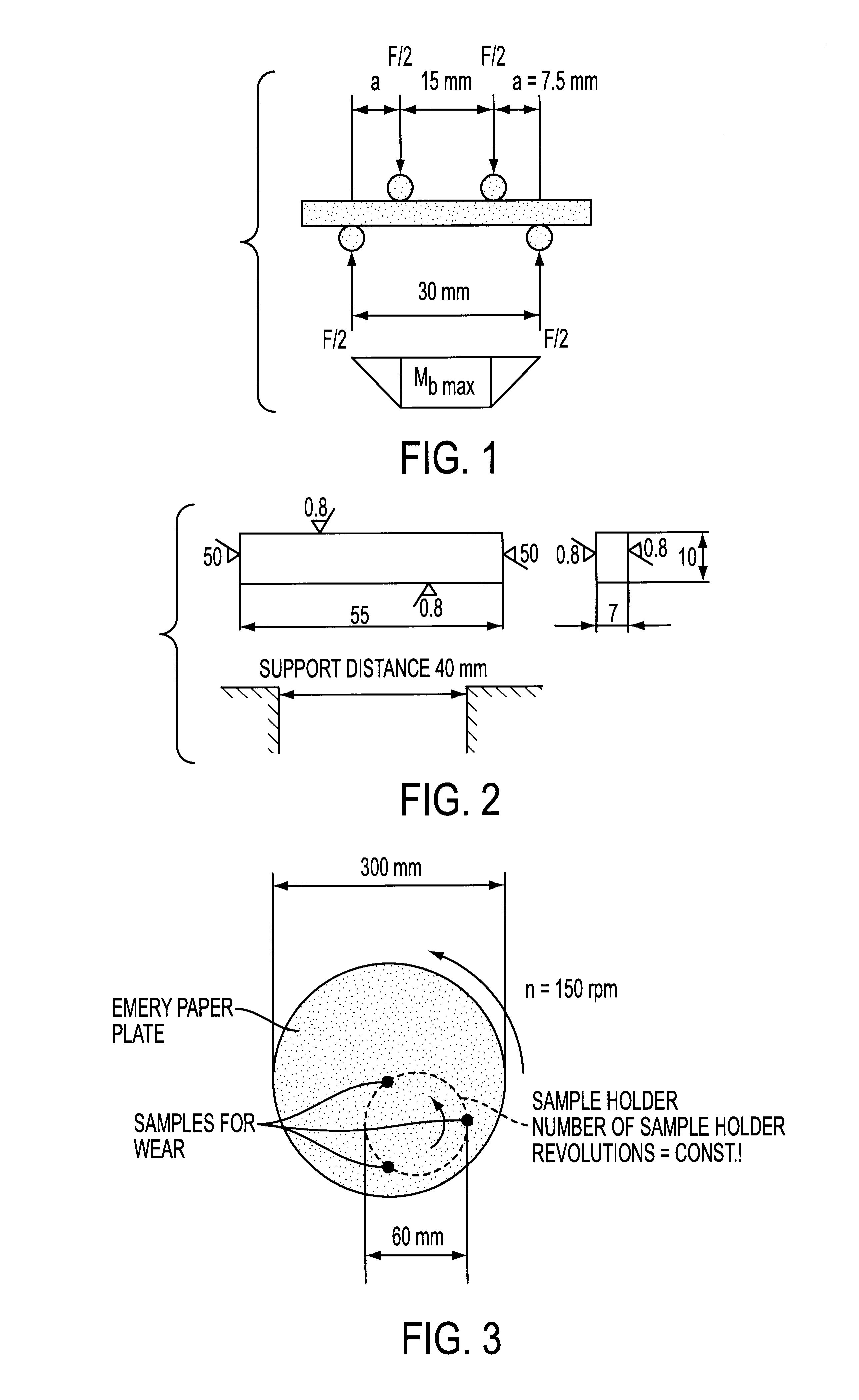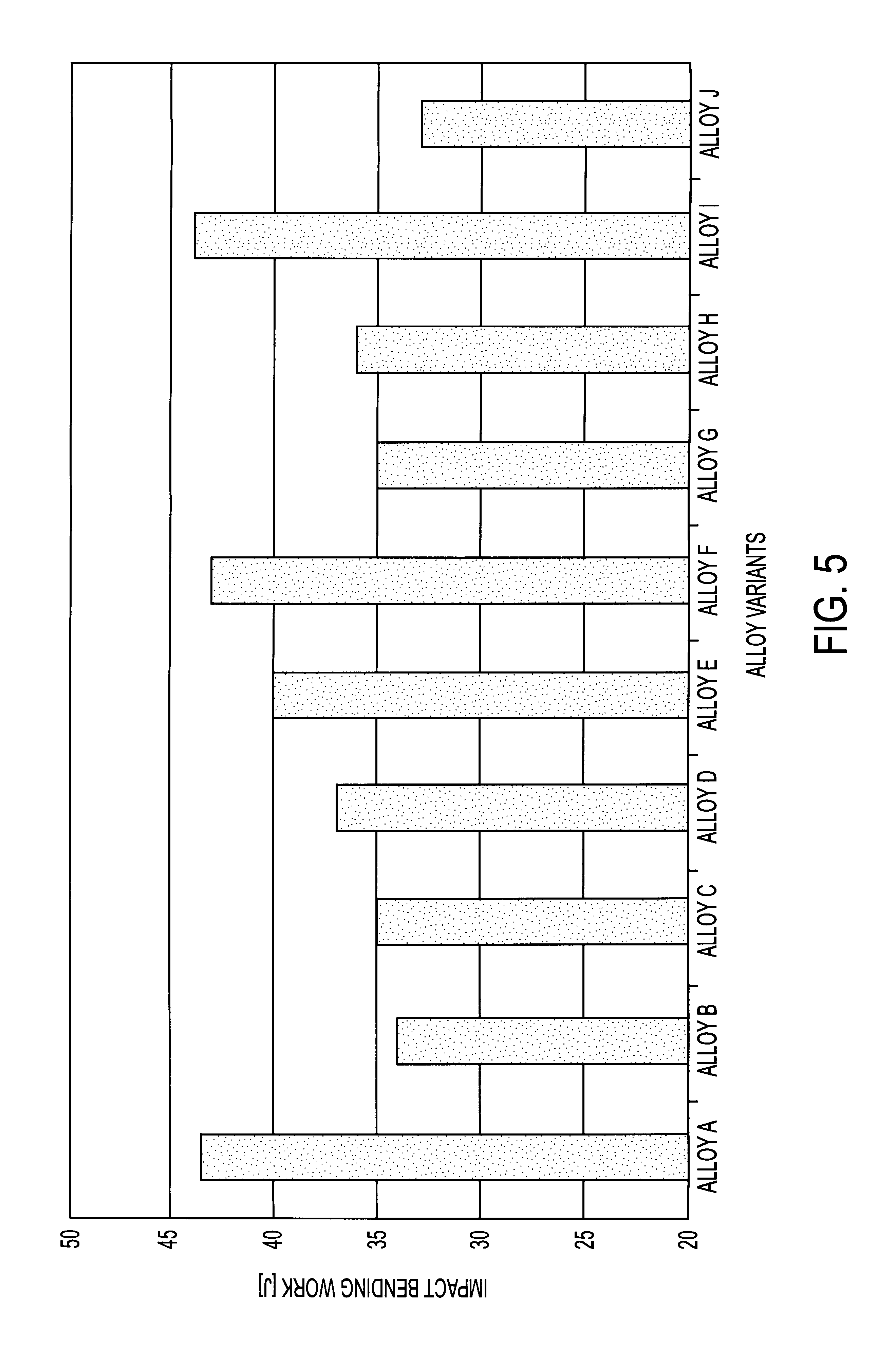Cold work steel alloy for the manufacture of parts by powder metallurgy
a technology of powder metallurgy and cold work steel, which is applied in the field of cold work steel alloy for the manufacture of parts by powder metallurgy, can solve the problems of adversely affecting, or ultimately precluding, the workability of the material, and the respective content of carbon and carbide-forming elements, so as to improve the mechanical properties, impact bending work, and wear resistance of the tool steel material.
- Summary
- Abstract
- Description
- Claims
- Application Information
AI Technical Summary
Benefits of technology
Problems solved by technology
Method used
Image
Examples
Embodiment Construction
Table 1 shows the chemical composition of a cold work steel alloy according to the invention (alloy A) and those of the comparative alloys (B through J).
The test results for bend fracture strength, impact bending work and wear resistance of alloy A according to the invention and of comparative alloys B through J are given in Table 2.
The bend fracture strength of the steel alloys was determined on round samples (R.sub.d= 5.0 mm) heat-treated to 61 HRC in a device according to FIG. 1. The initial force F was 200 N, the rate up to initial force was 2 mm / min and the testing rate was 5 mm / min.
The tests of the impact bending work of the respective steel alloys were done with samples having the shape according to FIG. 2.
FIG. 3 shows diagrammatically the device for determining the wear resistance.
If the bend fracture strength of alloy A according to the invention is compared to that of the comparative alloys (B through J) (Table 2) shown in a bar chart in FIG. 4, alloys E, F, H and I show e...
PUM
| Property | Measurement | Unit |
|---|---|---|
| Fraction | aaaaa | aaaaa |
| Fraction | aaaaa | aaaaa |
| Fraction | aaaaa | aaaaa |
Abstract
Description
Claims
Application Information
 Login to View More
Login to View More - R&D
- Intellectual Property
- Life Sciences
- Materials
- Tech Scout
- Unparalleled Data Quality
- Higher Quality Content
- 60% Fewer Hallucinations
Browse by: Latest US Patents, China's latest patents, Technical Efficacy Thesaurus, Application Domain, Technology Topic, Popular Technical Reports.
© 2025 PatSnap. All rights reserved.Legal|Privacy policy|Modern Slavery Act Transparency Statement|Sitemap|About US| Contact US: help@patsnap.com



